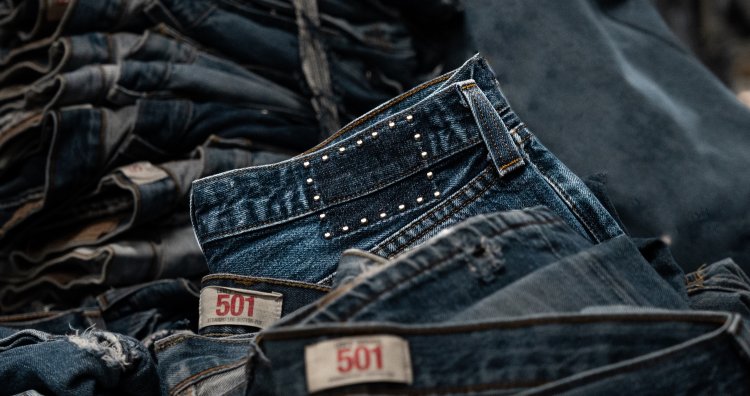
One-o-Five” is the hottest denim brand from three denim experts, including a charismatic man who has created the “Shibu-Kaje” culture. The jeans, which are made from carefully selected denim selected from a large number of discarded Levi’s 501s, are revived by super-cleaning and repairing them with their own unique technology. In this issue, we focus on the charm of “One-o-Five”!
Suponsered by
One-o-Five”, a product brand started to revive Levi’s 501s that were on the verge of being scrapped in the U.S.
Levi’s” is the originator of blue jeans. The “Levi’s” brand is the originator of blue jeans, and the “501” model, which was first introduced in 1890, has been worn the most as an eternal staple in the world. However, they are also the most discarded jeans. One-o-Five” is a sustainable products brand that started by purchasing 20 tons of discarded Levi’s 501s directly from the U.S. to bring them back to life.
One-o-Five’s official website is here.
Why did One-o-Five immediately purchase 20 tons of old Levi’s 501s at a local store?
One-o-Five is headed by Ryoji Yamazawa. He has been supporting the apparel industry from the backstage for more than 25 years through Yamasawa Press, a company specializing in ironing, inspecting, and repairing each garment by hand. Therefore, he has always felt a sense of distress when he sees the current state of the apparel industry, where many of the garments that are painstakingly finished by his valued employees are discarded in large quantities. It was in this state of mind that, when he visited Los Angeles in June 2019, he visited stores and flea markets and came across a “hunk” of Levi’s 501s that were on the verge of being discarded in large quantities due to lack of buyers around the world.
Having experienced the American casual boom in his youth, Mr. Yamazawa was a denim lover without equal, and when he saw the discarded Levi’s 501s, he felt a strong desire to “do something about them,” so he bought them exclusively on the spot. The quantity weighed approximately 20 tons. This is such a large quantity that two dump trucks capable of traveling on public roads could finally be put into operation to carry it away. In the mass, there were more than 40,000 501s in various conditions, including leg parts that seemed to have been discarded in the 1980s when Levi’s 501 shorts with cut-off lengths became popular, and full bodies that were too badly damaged to be worn and therefore unclaimed. The collection includes more than 40,000 501s in various states.
Garbage to Finest” – discarded or the best of the best. This is the theme of One-o-Five. Through this brand, One-o-Five will continue to pursue genuine, sustainable, and ethical products, rather than just trend words.
Click here for the official One-o-Five website
Why do nearly discarded Levi’s 501s become “the best of the best”? It’s because of the 6 charms of “One-o-Five” denim!
Many people may be reluctant to buy a pair of Levi’s 501 jeans, even if they are sustainable products, because they are on the verge of being scrapped and no one has chosen to buy them. However, ” One-o-Five” currently has a large number of highly sensitive customers, including famous designers who showcase their collections in Paris and denim collectors, and some models are so popular that there is an endless waiting list for their arrival. Here we will focus on the six reasons why ” One-o-Five ” is so popular.
One-o-Five’s appeal (1) “Officially approved by Levi’s Headquarters in the U.S.!
This project has directly approached Levi’s headquarters in San Francisco through Levi’s Japan and received official approval and support for the entire initiative. The status of “officially approved by the original source” is significant in a market where unofficially remade Levi’s 501s are available.
One-o-Five’s official website is here.
Attraction of One-o-Five (2) “Only jeans selected by the three core members who have a keen eye for Levi’s 501s are carefully selected!
There are three core members of “One-o-Five. The first is Mr. Yamazawa, who initiated the denim project, and the second is Kunio Kaneko, the reigning owner of “keyton,” a legendary vintage clothing store in downtown Adachi Ward that has been operating for 30 years. Keyton” was also a store that Mr. Yamazawa had frequented since he was a young man, and the two had known each other since before he started the denim project. The third and final person is Takuya Kawahara, who was born between 1967 and 1977 and has created the “Shibu-Kaje” culture as the owner of the store “John’s Clothing” in Shibuya. He is a charismatic figure who is well known to anyone who has been fascinated by American casual. When Mr. Yamazawa consulted with Mr. Kaneko about a project, he was introduced to Mr. Kawahara, who decided to join the project and has been working on it ever since.
↑From left: Kunio Kaneko, Ryoji Yamazawa, Takuya Kawahara
These three men are what one might call “denim professionals” who, while all working in the same apparel industry, have independently expanded their activities and enhanced their knowledge and sensitivity to the denim industry. They carefully select jeans that fit the image of “One-o-Five” from a myriad of Levi’s 501s, accurately distinguishing slight differences in the country of production, age, and texture of the fabric. The jeans selected by their discerning eye, which is made possible by the knowledge they have accumulated over the years, such as “knowing roughly the country of production and age just by touching the fabric” and “identifying a 501 by its length alone,” have an indescribable, elegant look that will make denim lovers swoon.
One-O-Five’s official website is here.
What we consider important in the jeans we use is the aging process that gives a sense of “backbone”. Artificial processing is remade into another item.
One of the common attractions of jeans is “color fading. The color fading that occurs over time varies from one pair of jeans to another, and there is no correct way to determine the right color, so it is a point that most tests a professional’s aesthetic sensitivity and knowledge of how to determine if the color has naturally faded. Therefore, “One-o-Five” focuses on natural color fading with a sense of “backbone. For example, jeans with unnatural color fading that looks artificially drawn on, as seen in jeans that were popular in the 2000s, are not used as-is as jeans, but are instead used as remake material for other items. The images below show old Levi’s 501s with natural color fading and those with fading caused by human processing, side by side. The left side is the natural color fading, and the right side is the artificially processed one. You can see that the color fading, especially in the beehind-the-knee area, is unnaturally drawn on the artificially processed one.
Click here for One-o-Five’s official website
One-o-Five’s appeal (3) “The denim is washed until it is odorless without destroying its texture, making it easy to wear even for those who don’t like old clothes!
The unique smell of old jeans is a point that divides people’s tastes. One-o-Five” developed an original detergent in cooperation with “Laundry Brothers” to revive old Levi’s 501s. By washing denim with this detergent, the company has succeeded in reducing the smell to the point of being almost odorless. The detergent is highly alkaline, using only naturally derived ingredients, and not only cuts odors to the point of being almost odorless, but also breaks down stains such as “sebum,” “oil,” and “paint.
Click here for the official One-o-Five website
Not only in detergent development, but also in the cleaning process! Removes stains but does not remove the charm of denim
In addition to the development of detergents, the company also spares no effort in the laundry process. For this project, Yamasawa Press applied the cleaning know-how it has cultivated over the years and developed a unique washing method that preserves the texture of denim to the maximum extent possible. First, the denim is soaked in a cleaning solution that combines an original detergent and lukewarm water, which is adjusted to the optimum temperature for removing stains without damaging the denim. This lifts the stains from the denim. Next, the stains that stand out are brushed off by hand. A horsehair brush is then used to carefully remove any stains that could not be removed by the soaking process, while spraying the denim with a cleaning solution that contains a higher concentration of detergent than the soaking solution.
Finally, the clothes are washed and dehydrated in a washing machine. This time-consuming process removes the maximum amount of dirt while preserving the texture of the denim. After washing, the indigo tone of the denim is enhanced as if it has been given a makeover, giving it a fresh look.
Click here for the official One-o-Five website
One-o-Five’s Attractiveness 4: “Denim professionals are in charge of sewing too! The very natural and authentic look is irresistible.”
Most of the Levi’s 501s that were on the verge of being discarded have holes somewhere due to damage. One of the charms of the jeans sold at ” One-o-Five ” is that all such damage is basically repaired. The person in charge of such repairs is a craftsman who is in charge of sewing one-of-a-kind items at the sample factory and has a deep knowledge of denim. He carefully selects the color and count of the thread to match the texture of each denim, and then carefully adds reinforcing stitches one stitch at a time.
The design of the repairs may be so conspicuous that it is hard to tell where the damage is, or it may be so naturally blended in that it cannot be seen from a distance. One-o-Five” jeans are finished with thorough consideration given to the method of repair and the finished product.
Click here for the official One-o-Five website
One-o-Five’s Appeal #5: “Almost all materials are reused! If you get to know the products that you can feel the “warmth of human hands” with thorough consideration for the environment, you will surely become a fan.
What is surprising is that most of the processes introduced so far are carried out by “human hands. In this age when everything can be done by machines, ” One-o-Five” dares to focus on the exquisite texture and difference in quality that can only be achieved by human hands. The company reuses almost all of its materials instead of discarding them, for example, dismantling and remaking jeans that are difficult to use as jeans into other items (the only thing that can be discarded is the unraveled stitching threads). The movie below shows the process of reviving old Levi’s 501s from Yamasawa Press. If you know the production background, you will be able to feel the charm of ” One-o-Five ” jeans more deeply.
Appeal of One-o-Five (6) “All jeans sold are one-of-a-kind! If you can find a pair in your size, you should buy them immediately.
Currently, “One-o-Five” jeans are sold mainly through the directly managed store and e-commerce store attached to the factory. Since each pair is one-of-a-kind with a different texture, it is recommended that you buy them as soon as you find them in your size. The color fades all have a natural aged look and are elaborately repaired to match the style.
One-o Five’s official website is here.
Characteristic of One-o-five’s jeans 1 “Iconic hand-hammered studs on the back waist!
The back style is set with hand-hammered studs in the shape of Levi’s patch marks. They add a moderately luxurious accent to the cozy denim look.
Click here for One-o-five’s official website
One-o-five’s jeans feature 2 ” Original brand tag set on the inside of the waist
A “One-o-Five” woven name tag is sewn onto the inside belt. This arrangement, which was devised so as not to interfere with the original style as much as possible, shows the denim professionals’ respect for Levi’s 501.
Click here for One-o Five’s official website
If you want to check the real thing, go to the store attached to the company’s factory in Takenotsuka!
If you would like to check out the ” One-o-Five ” jeans in person, please visit the directly managed store attached to the Yamasawa Press factory. The shop sells not only jeans, but also outerwear and T-shirts that fit them, as well as the detergent actually used to clean denim. All of the fixtures in the store were used in the former ” keyton ” and ” JOHN’S CLOTHING ” stores. Almost no new fixtures were procured, reflecting a commitment to sustainability.Those who have visited the stores of those days will feel nostalgic.
One-o-Five” store details
Business days: Tuesday, Wednesday, Friday, Sunday
Hours: 12:00 – 18:00
Address: 1-8-15 Hanabatake, Adachi-ku, Tokyo (Map)
Inquiries : [email protected]
Official Store is here

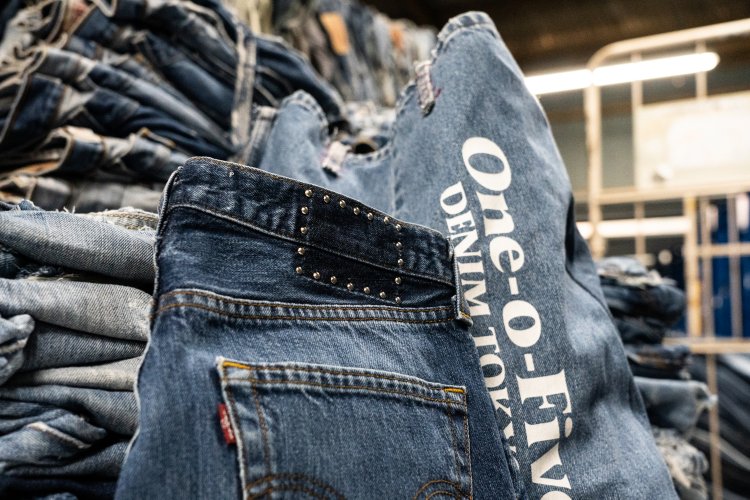
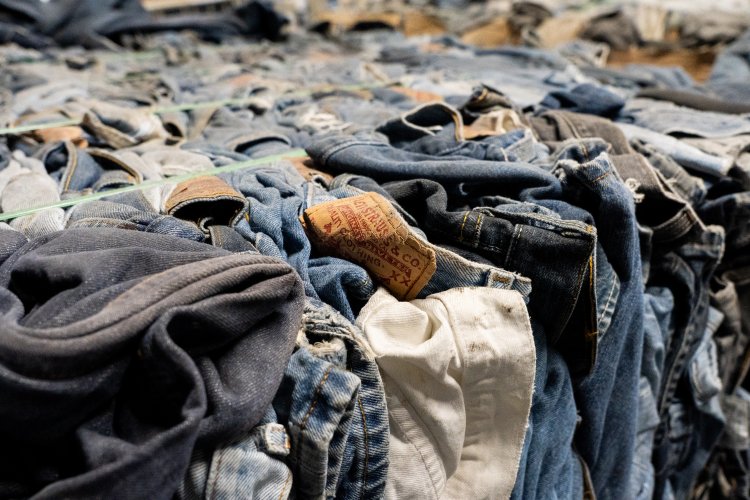
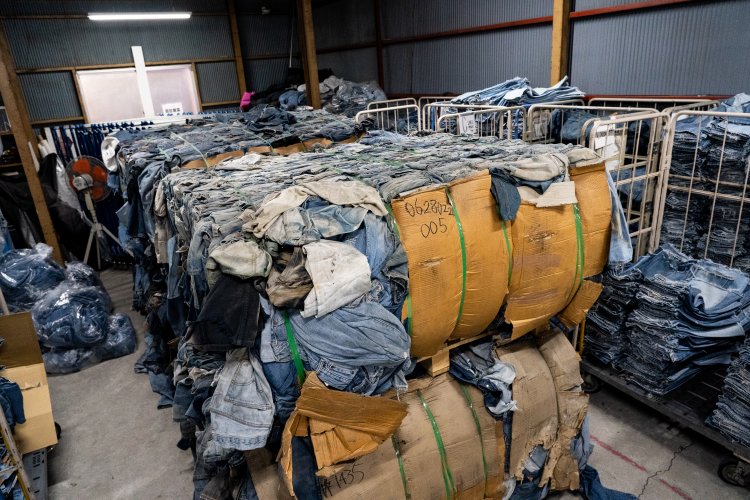
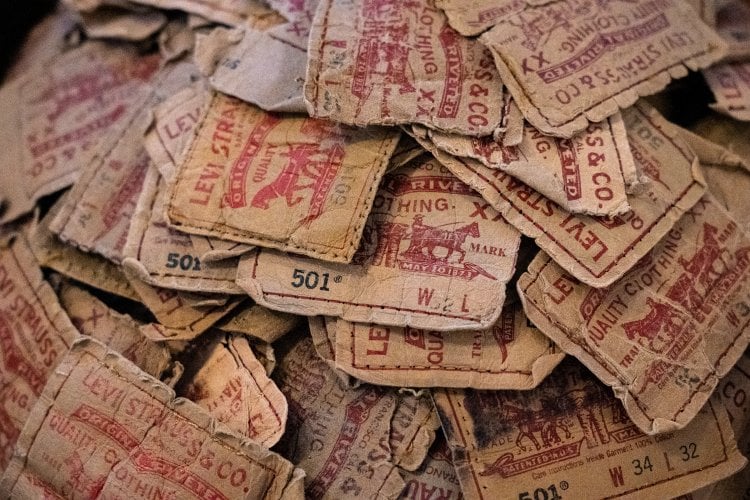
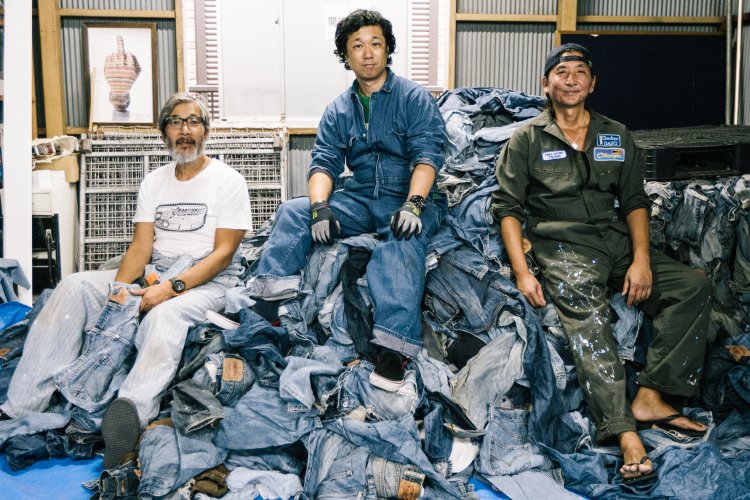
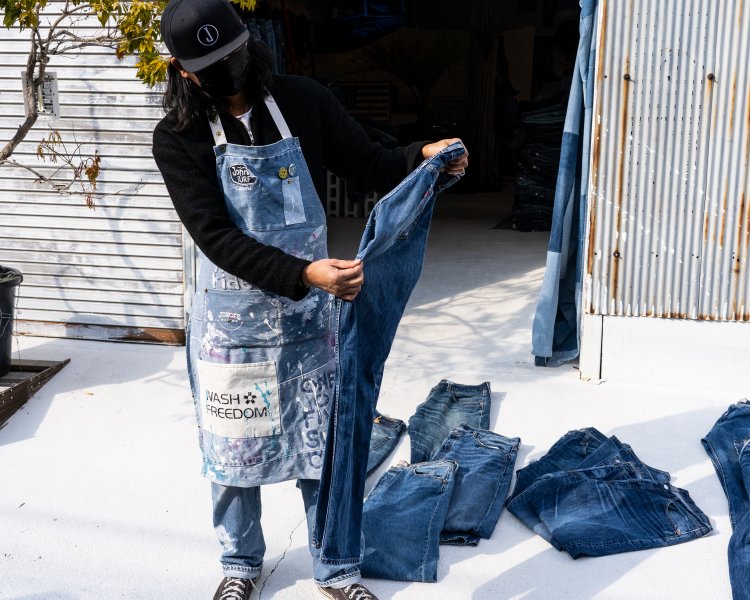
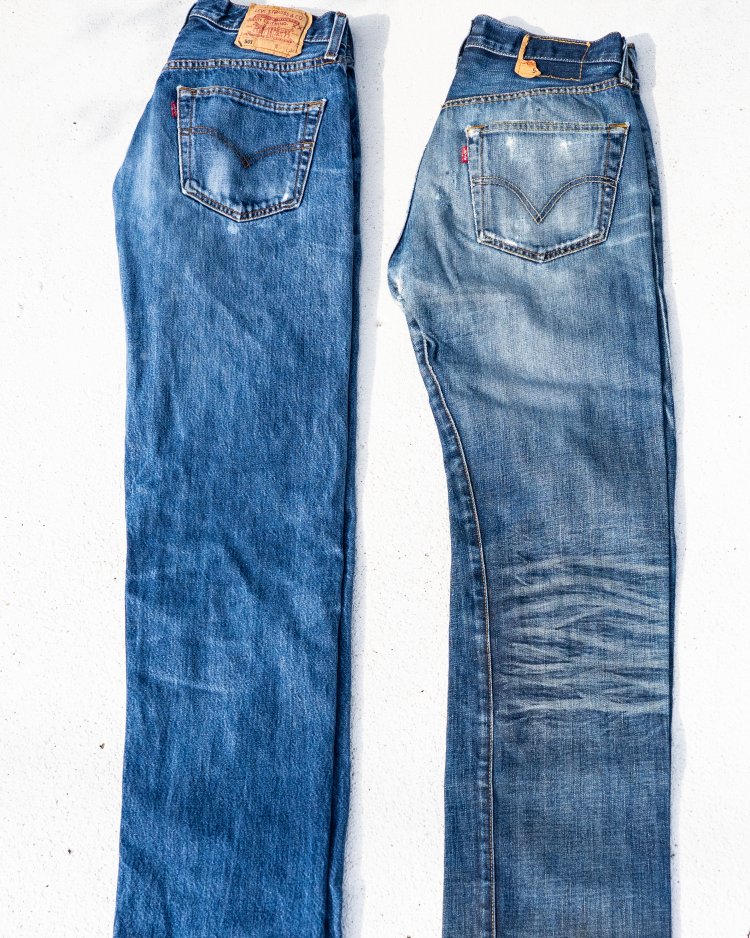
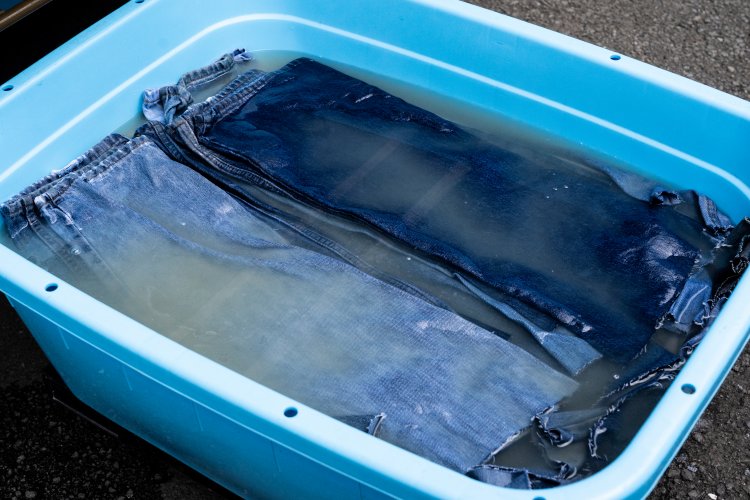
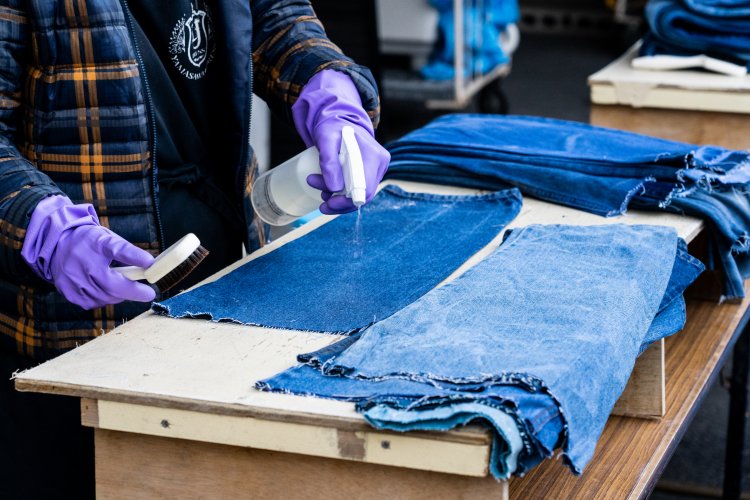
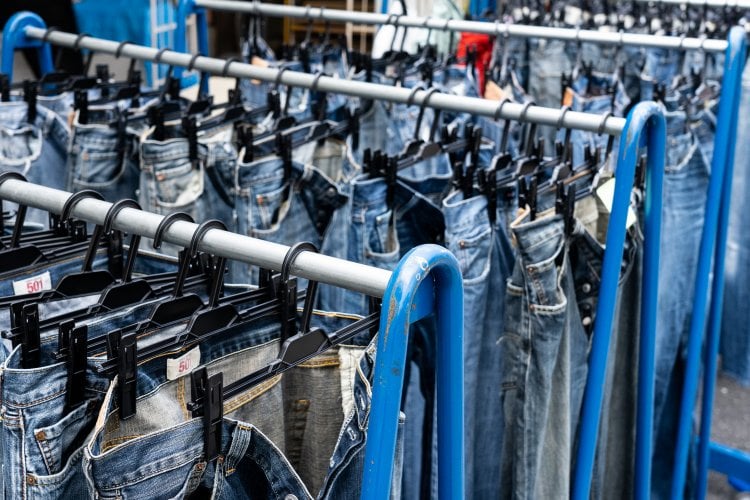
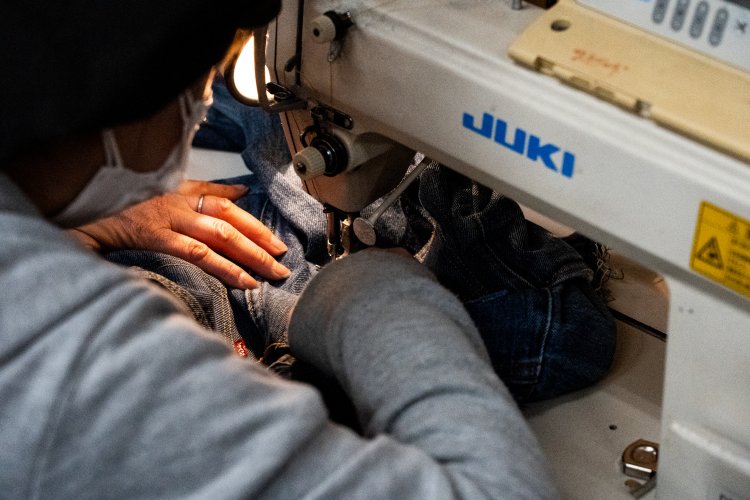
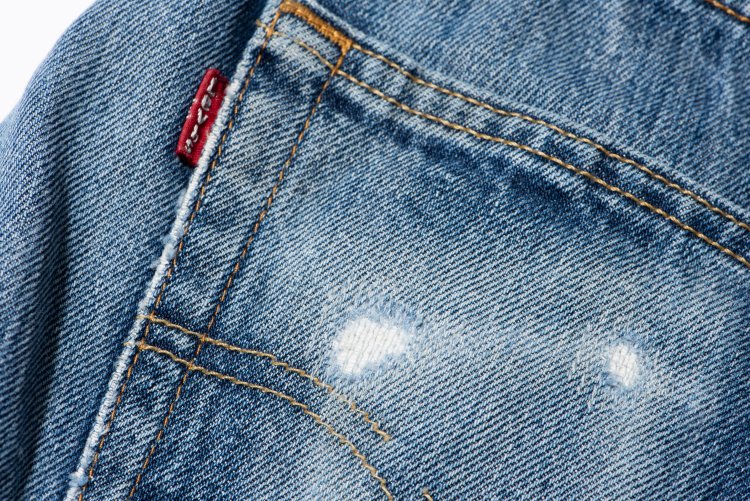

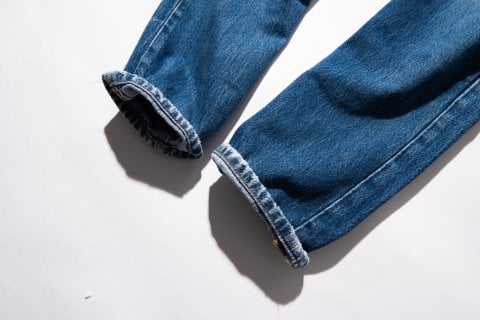
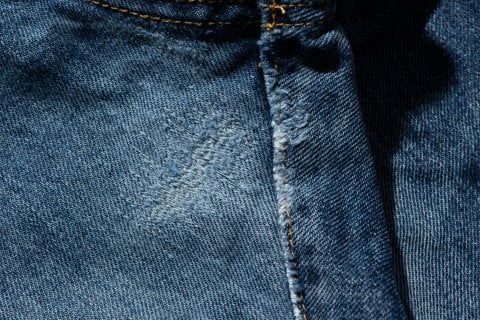
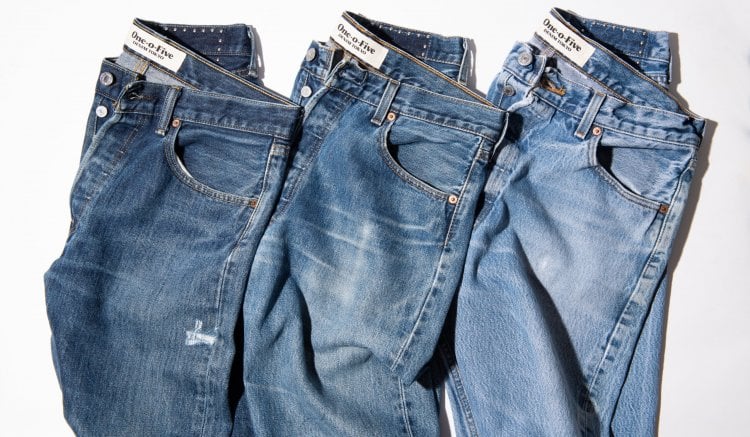
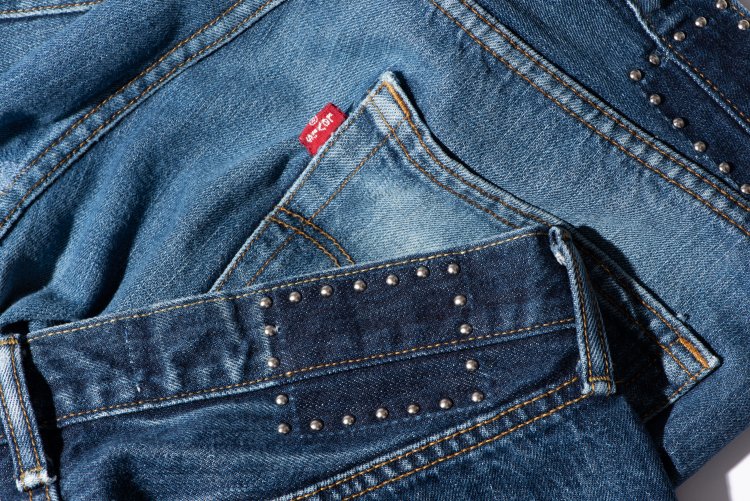
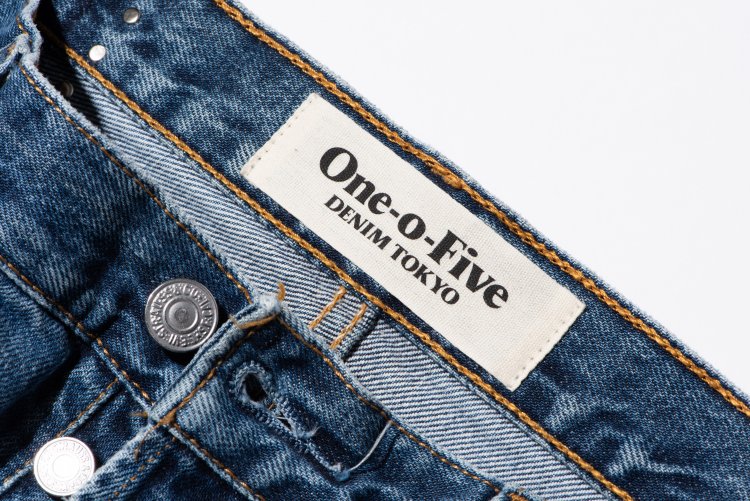
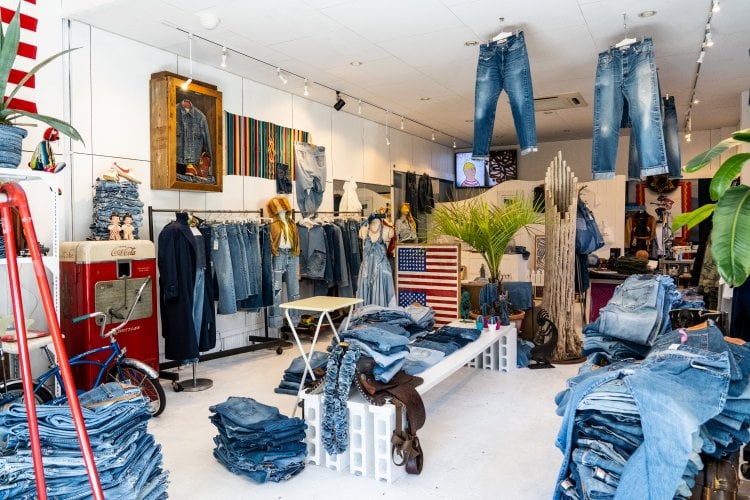
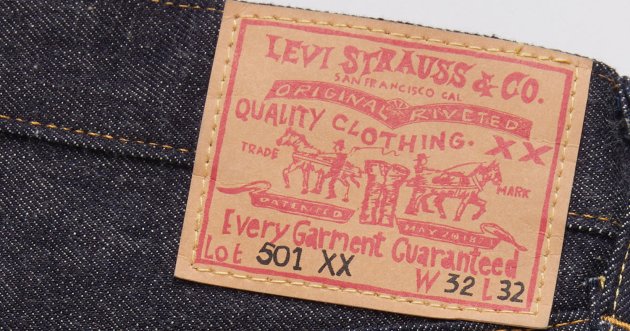
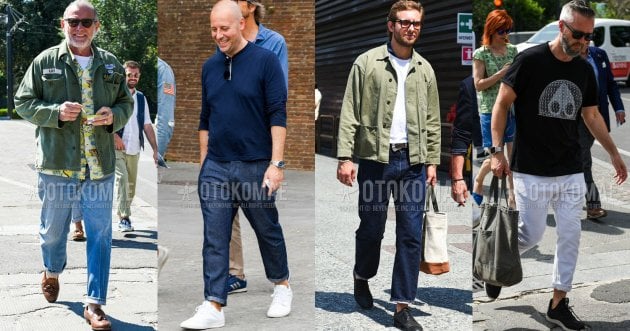
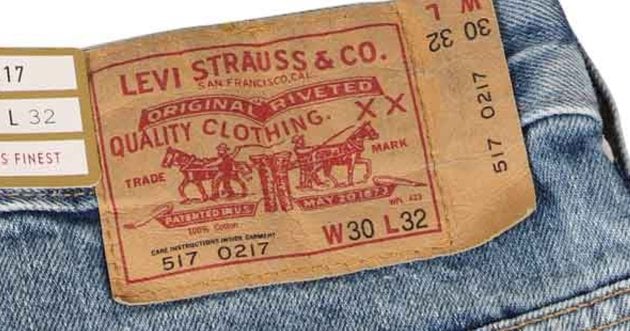
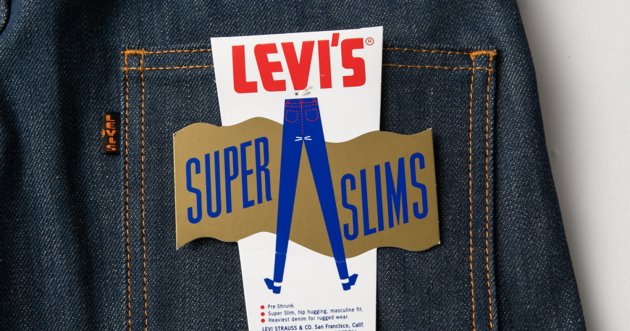
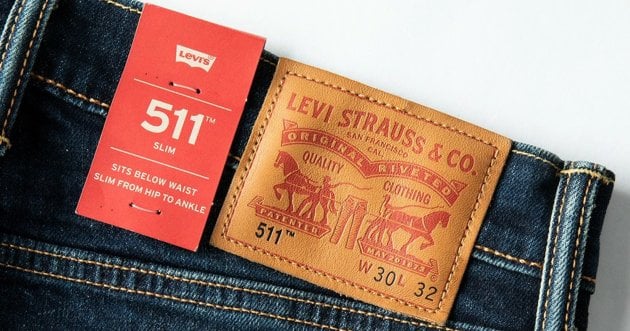
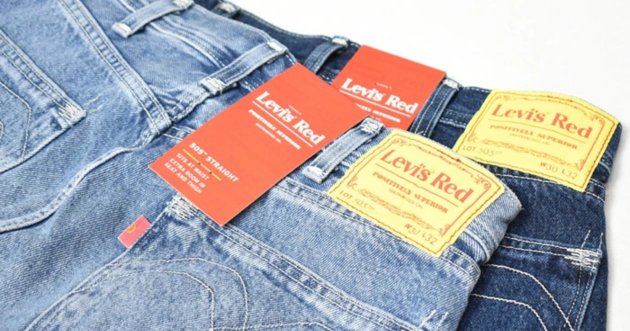
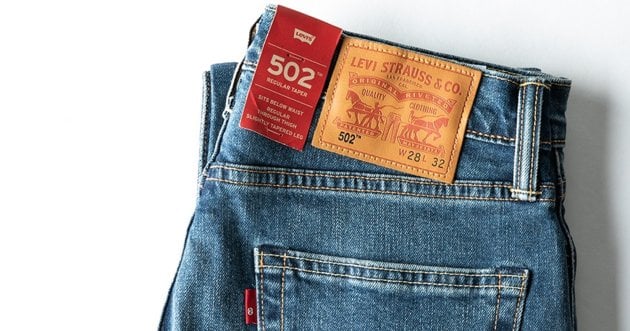
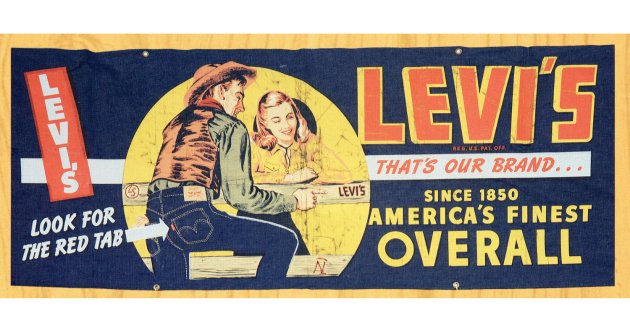
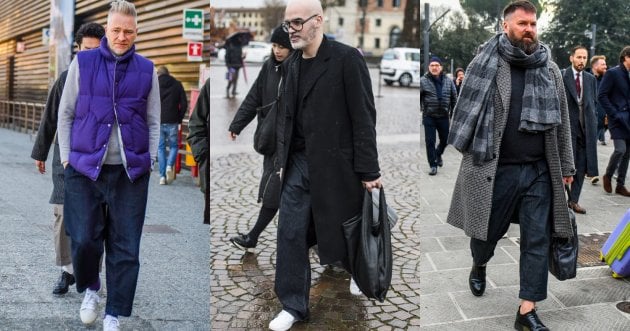
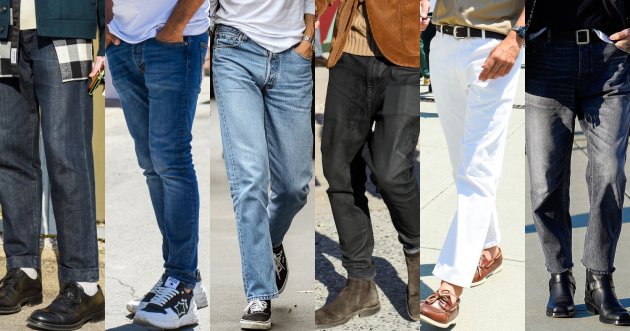
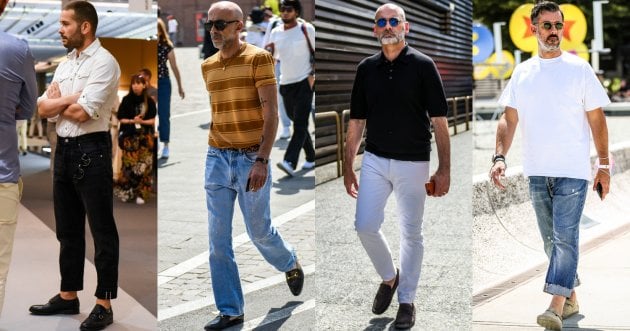
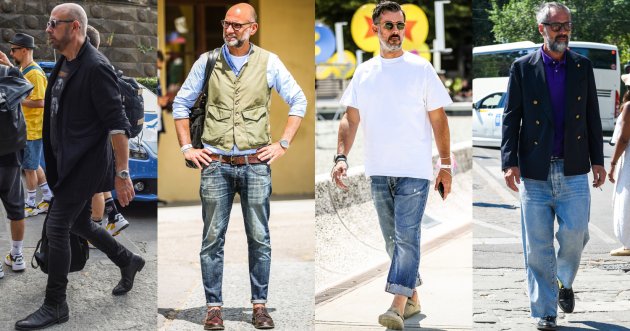
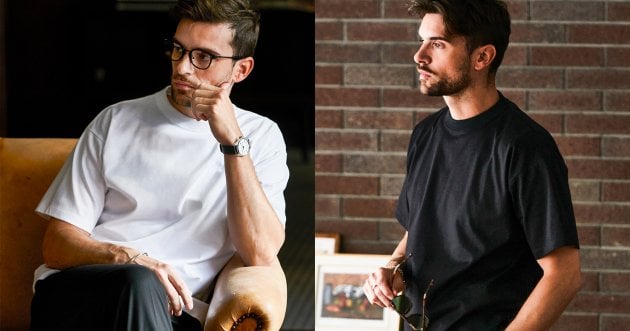
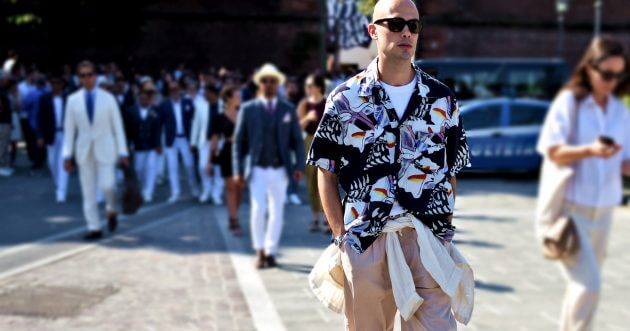
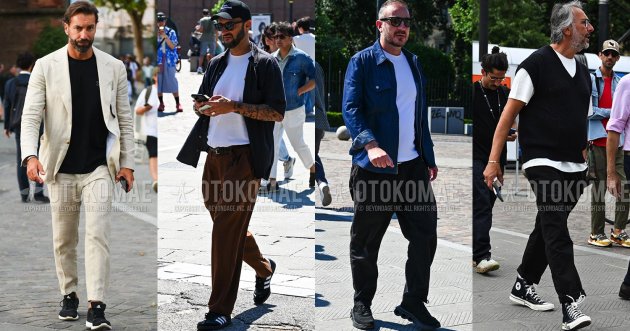
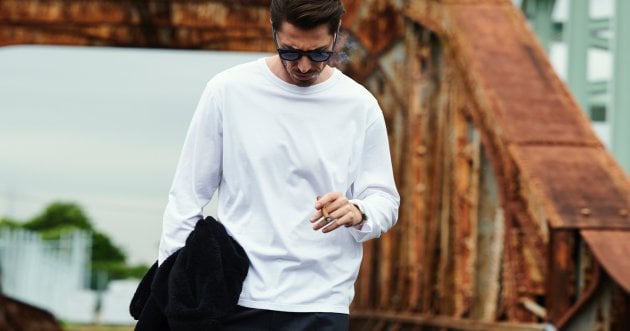
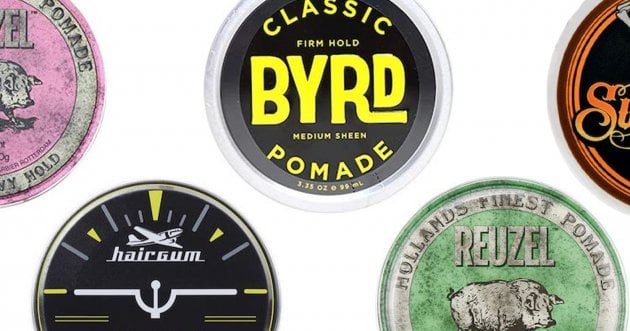
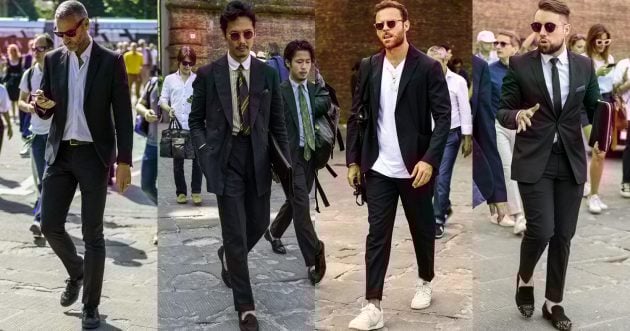






![A roundup of the 65 most popular brands of jeans [ 2024 Denim Latest ].](https://otokomaeken.com/wp-content/uploads/2015/04/777f096a10d40de2a7037fce7da8f708-115x60.jpg)


